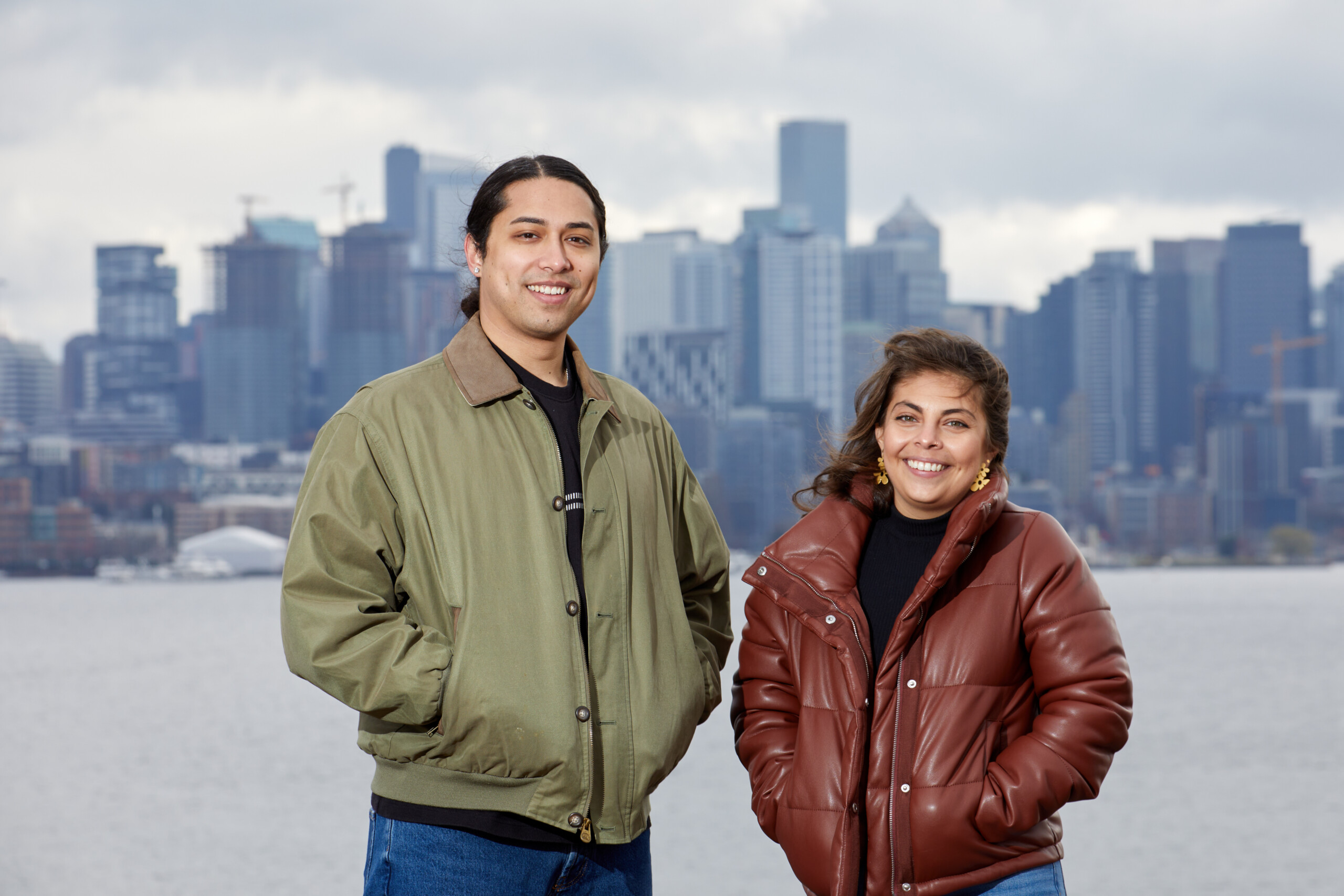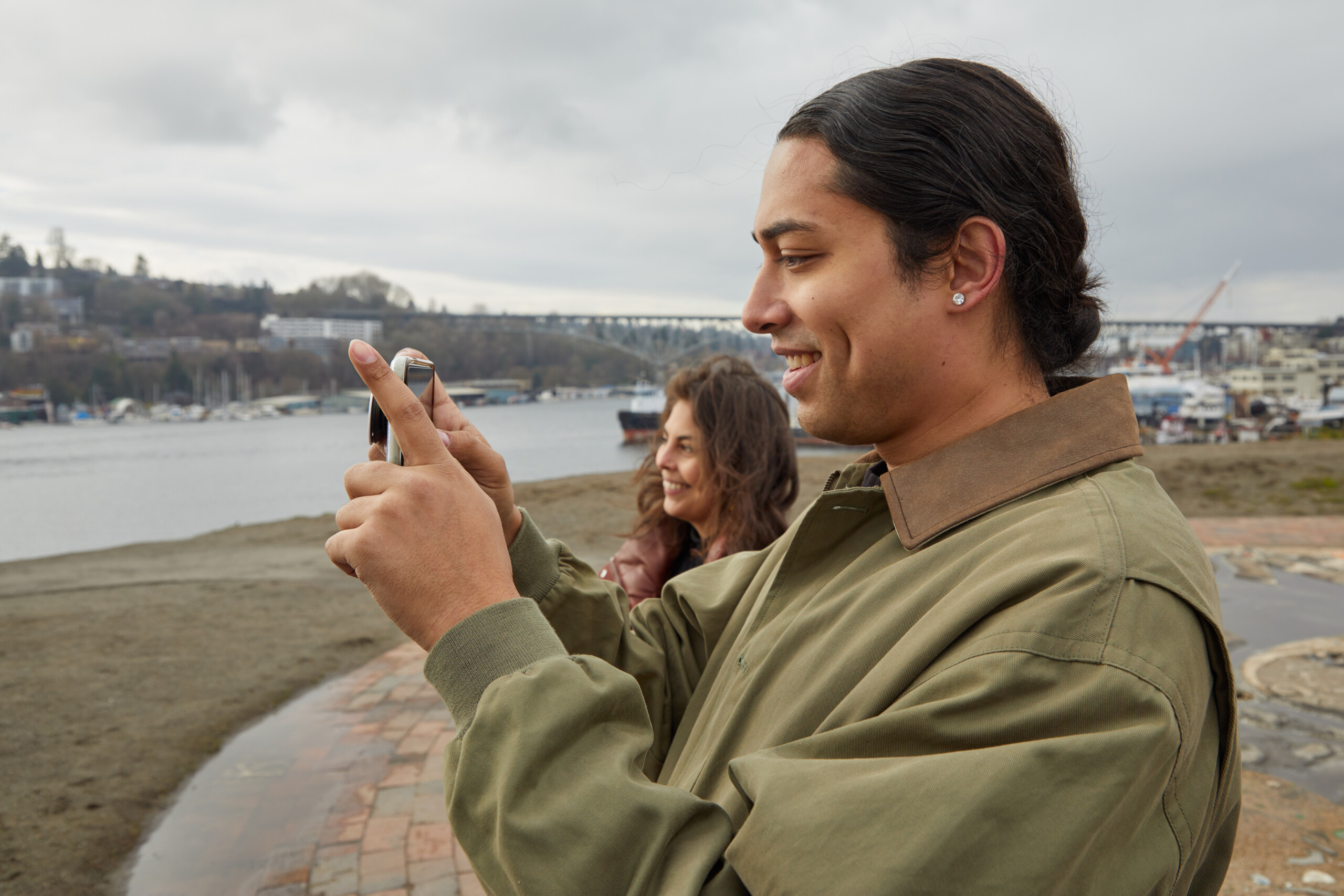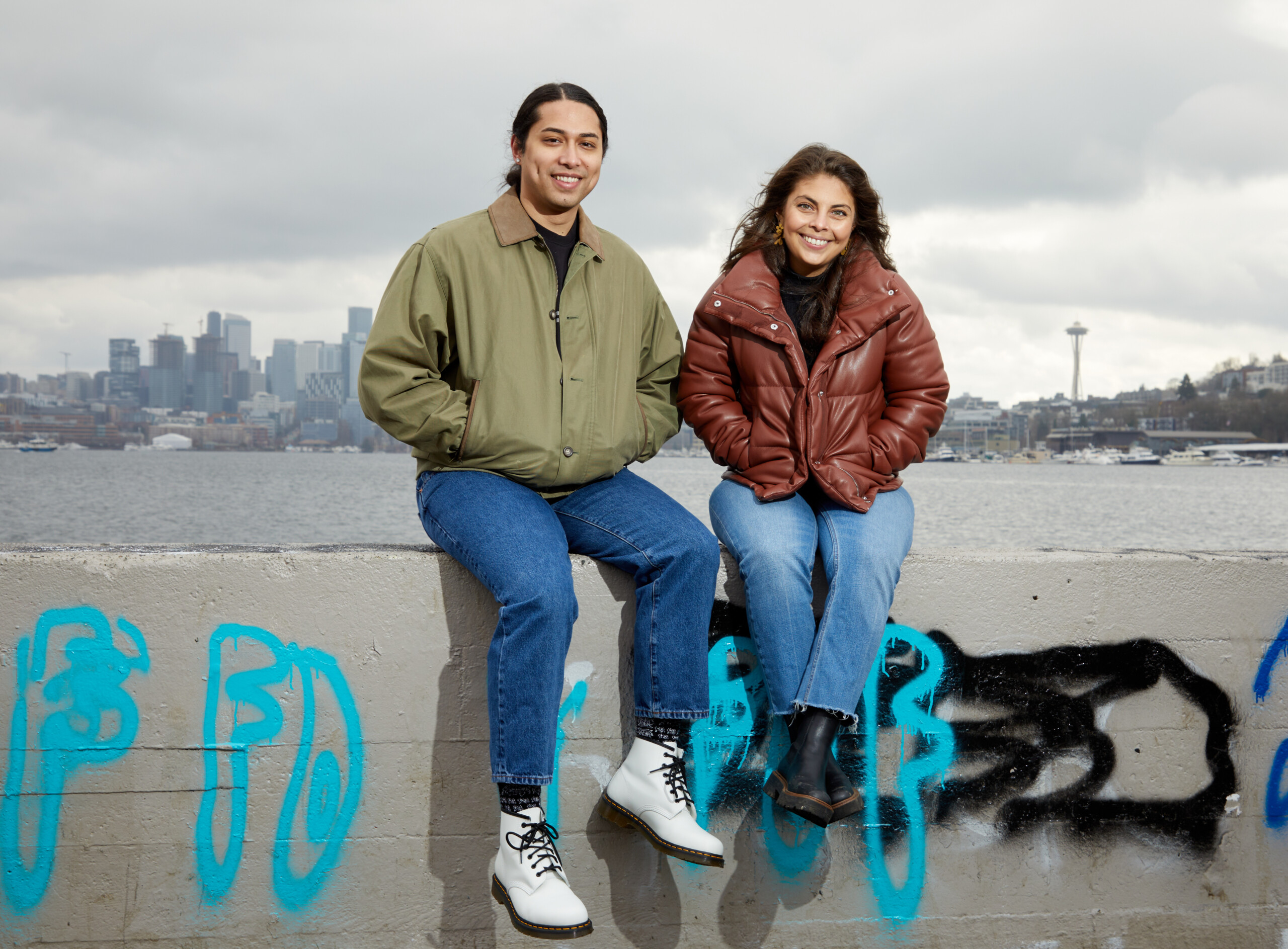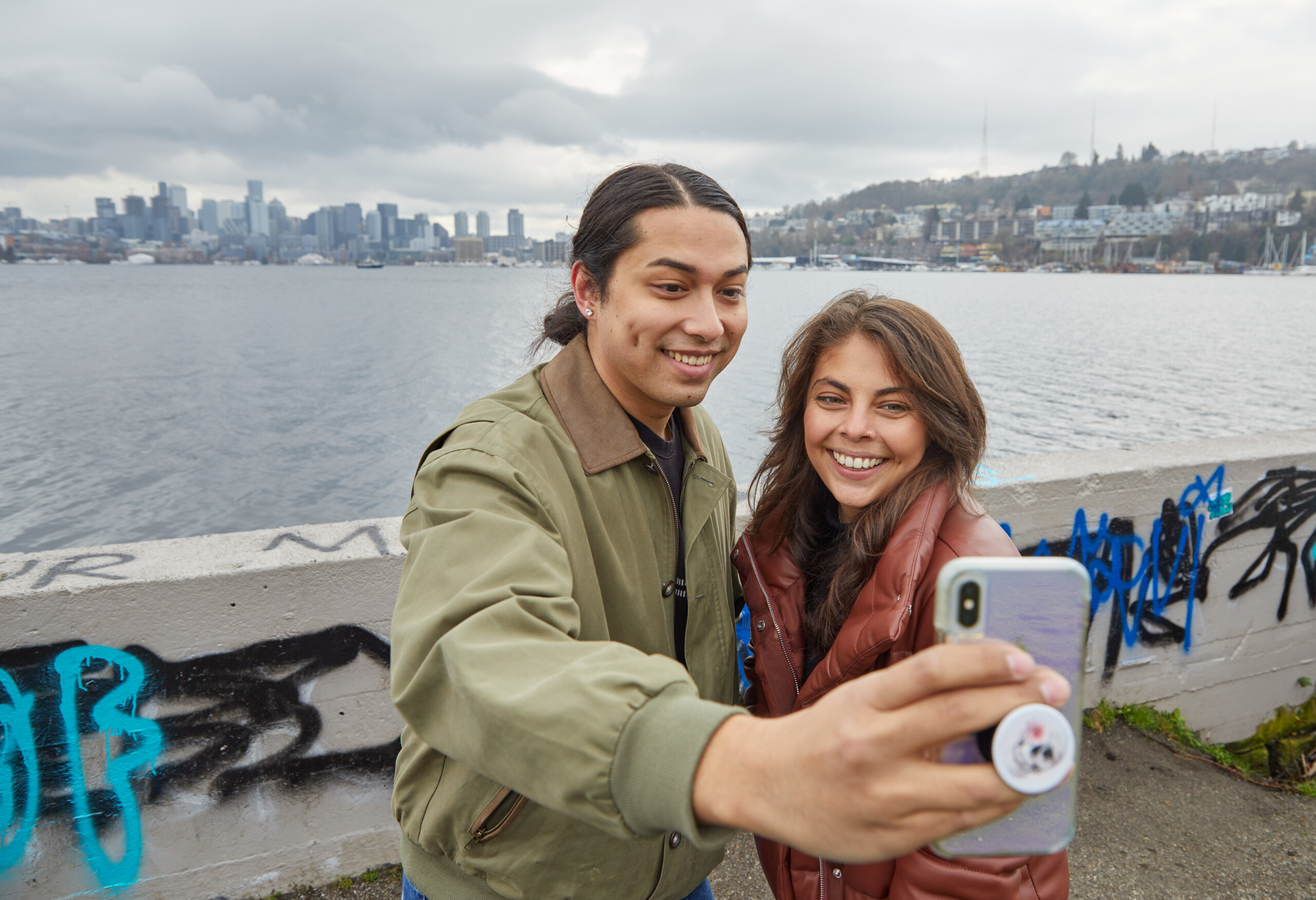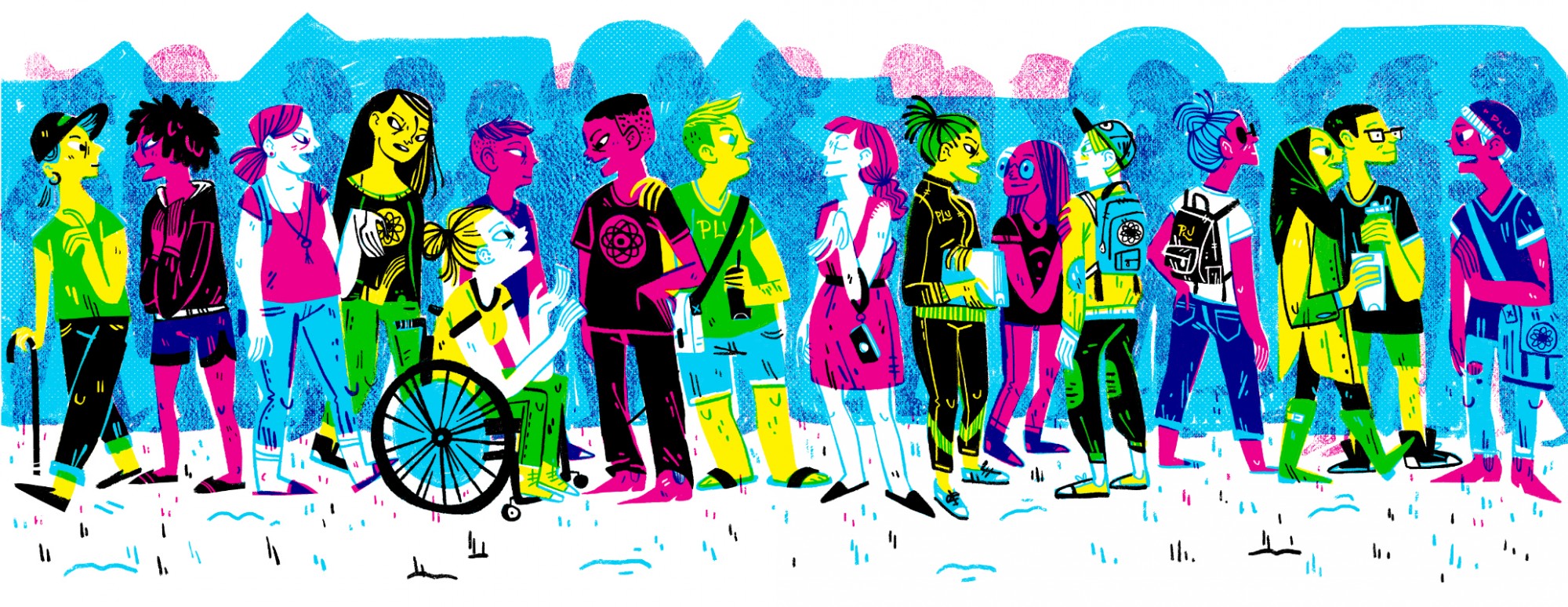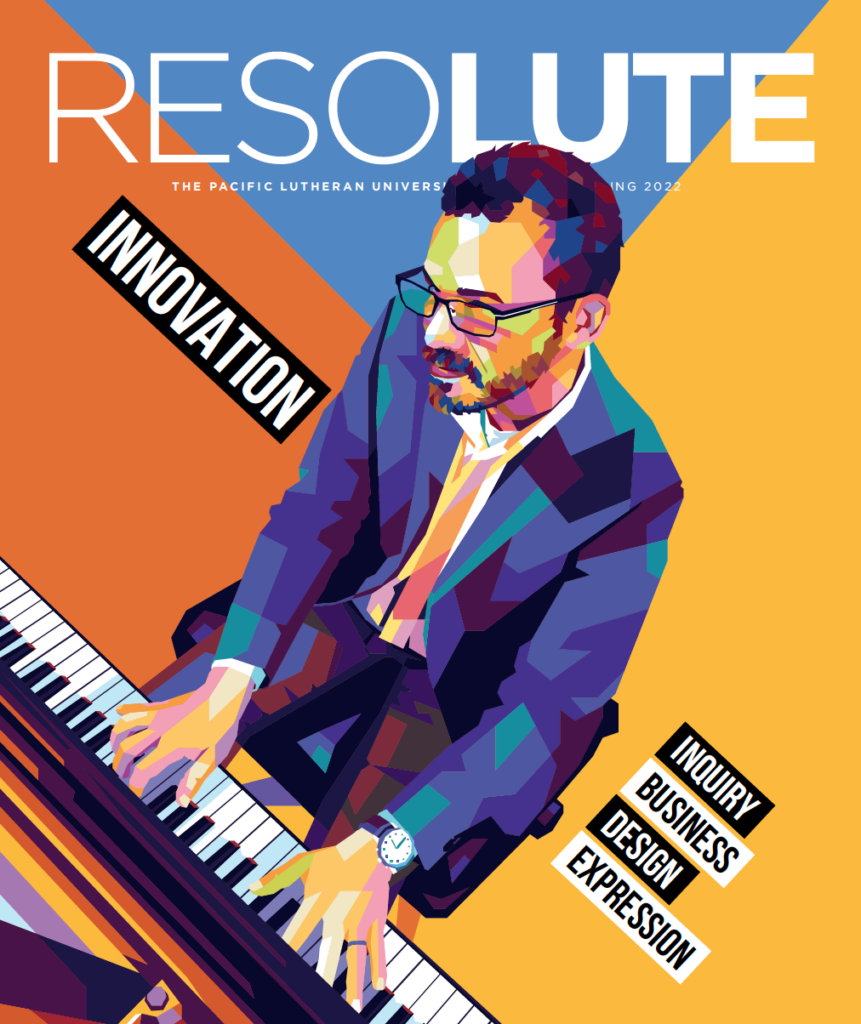A roundtable discussion about innovation, diversity and inclusion
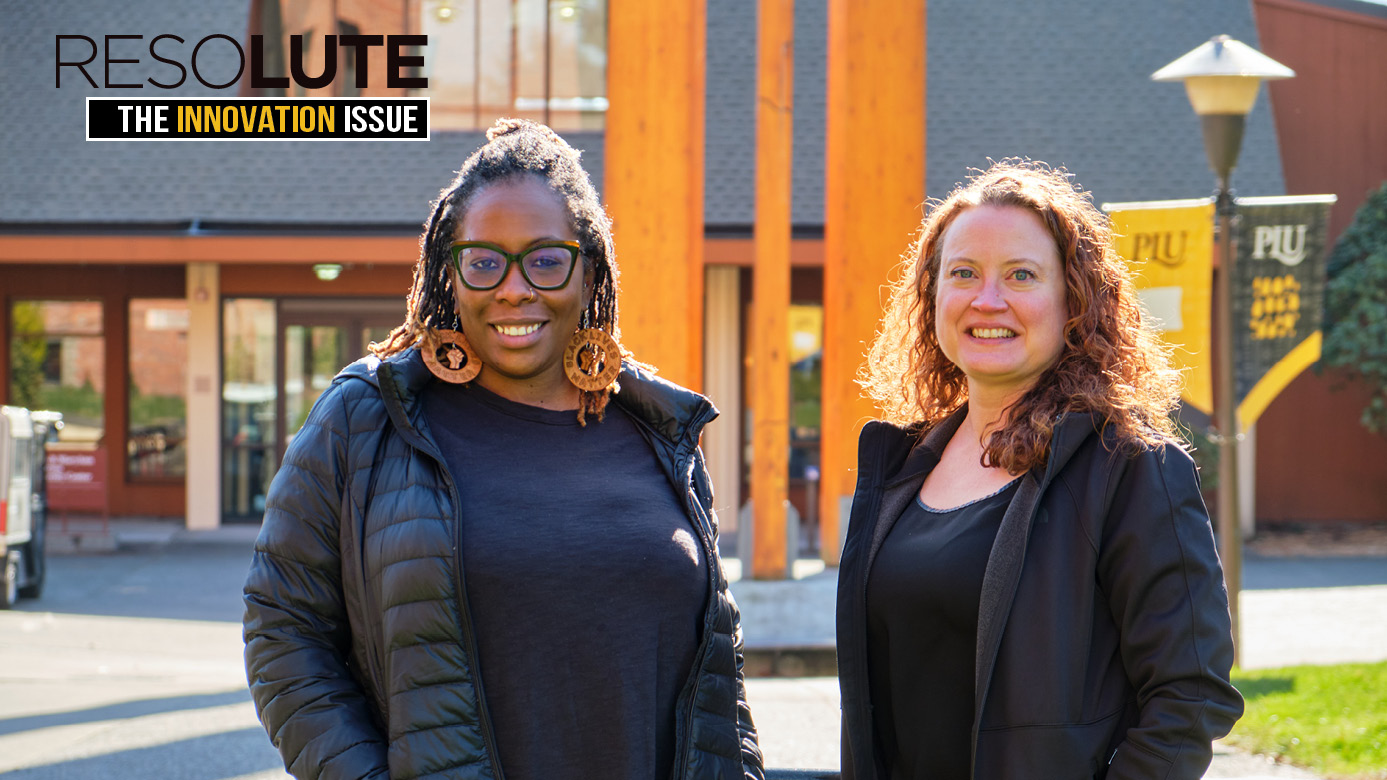
Image: Angie Hambrick (left) is PLU’s associate vice president of Diversity, Justice and Sustainability. Jen Smith (right) is PLU’s dean of Inclusive Excellence. (Photograph by John Froschauer/PLU)
By Kristy Gledhill, MFA ’21
ResoLute Contributor
In 2022 — when polarities abound and institutions and individuals alike have been called to reflect, redefine and transform — what does it mean to call the work of equity “innovative”?
As a concept, innovation can be used interchangeably with words like ingenuity, progress, newness, novelty or breakthrough — all seemingly “positive” connotations. But when the question of how a focus on equity in academic institutions like PLU may be “innovative,” some compelling questions arise.
As one PLU graduate puts it: “Why does the humanization of people have to be flashy and sexy?”
So. That’s where this conversation begins — by troubling our assumptions. Can we call the work of equity at PLU — or anywhere — “innovative?” And what does innovation even mean in this context?
As a white woman who works with other white people to increase racial literacy — and as a ‘21 graduate of the Rainier Writing Workshop, PLU’s Master of Fine Arts in creative writing program — I’m interested in the semantics of social justice and the idea of challenging default definitions and linguistic habit.
A couple of months ago, via Zoom, I met with four members of the PLU community to explore these questions. Angie Hambrick is PLU’s associate vice president of Diversity, Justice and Sustainability. Jennifer (Jen) Smith is PLU’s dean of Inclusive Excellence. Maya Perez ’16 is currently an executive functioning coach in Seattle and is working on a masters degree in clinical mental health counseling. Tyler Dobies ’16 is a theatremaker living in New York who was working on a show in Seattle at the time of this conversation.
THOUGHTFUL INQUIRY IN ACTION
Here’s how the group grappled with how (and whether) equity work and thinking — conceived of as “diversity and inclusion” or “D&I” at PLU — might be considered innovative:
Tyler: Well, let me start with this: I think the way that we in the American and Western paradigm understand D&I is through the lens of capitalism. We’re looking for something new, something lucrative, something about ownership and commodity and quotas that can be framed as something innovative, right? And because of that, I get a little icky thinking about becoming innovative here because that’s just not how we understand D&I work.
Angie: I’m thinking about it a little bit in that way too, Tyler. It’s like “D&I” is just the language we’re using in the framework of the academy. But if I think about my work personally — as Angie trying to humanize my black son — that work and how I choose to do that with him is innovative because we have been told for so long that we are not human. And I don’t refer to that work as “D&I.”
Tyler: I almost think that it’s a return to something, instead of something that is new. I mean, I’m a theater artist, and the idea that all stories have value, that there should be equitable representation, that we should make space for all, is more a return to something rather than something that’s necessarily innovative.
Angie: I love what you’re saying about it being a return. It is, for me, thinking outside of the structures that have been maintained to tell us who we are. I don’t know if I’m into “innovative” yet because I need to understand what it actually can mean outside the constraints in which it’s been formulated.
Jen: Right. There were ways before our current ways. And so are we to look at our D&I work as a “new” way? Or does removing the cloaks of the various systems of oppression to uncover the ways that were there before, specifically indigenous ways, move us to whatever goals we have around D&I work?
Maya: Yeah. And I keep thinking about diversity and inclusion as values, as things that you can’t necessarily teach someone to do, to feel, to want. To teach someone to care — to want diverse perspectives and then not just include but value them — don’t feel like things you can force. Which just speaks to the corporatization and co-opted nature of D&I as it stands right now.
Jen: Yes, because this is just basic work to make a place where all of our students are valued for who they are so they can succeed. So why does it have to be new or super sexy or flashy in order to be valuable? The white supremacist, capitalist notion of time is that progress is forward-moving rather than simultaneously connected to the past, present and future. So, yes, the idea of newness and progress that “innovation” often brings up needs to be unpacked.
Narrator’s Interjection: Awkward silence on the part of the person tasked with writing a story on “Innovation in D&I” for the “Innovation” issue of ResoLute.
Tyler Dobies ’16, and Maya Perez ’16 at Gasworks Park in Seattle. (Photographs by John Froschauer/PLU)
REFRAMING THE QUESTION
Narrator: What do you think of the idea that the very act of prioritizing diversity and inclusion work in an institution is innovative? And that those leading D&I-related change must think in innovative ways — as we are here as we do the unpacking Jen mentioned — to bust through structures that have been erected?
Jen: Well, I think the structures are actually underneath us. Because we pushed them down and suppressed them. The very foundation of the work we do is on beliefs, practices, imaginings that people have attempted to erase or eradicate. That’s a different way of thinking about the work.
Maya: Which I think, like Tyler said, is resurfacing, returning, unearthing and making space for things to breathe after having been buried.
Narrator: (With a sigh of appreciation into the thoughtful silence following that evocative image, remembering Maya had focused her studies at PLU “around inequality and its intersections with our natural environment.”) Whew.
Tyler: That makes a lot of sense. I think it depends on what this question is asking. It’s innovative because of the ways in which we have been taught to think in the systems we’ve built. And the systems are very cleverly hidden by white supremacy.
Jen: Exactly. Here’s a great example: A philosophy faculty member gave a talk years ago on whether faucets are racist. He was looking at these automatic faucets that don’t pick up darker skin tones*. So a touchless faucet is an innovation, right? But it’s carrying with it all of the other crap that is in that person’s head. And so even things that are new have to reckon with the foundation on which we stand in order to not be exclusive or racist or capitalist or ableist or whatever.
Angie: Wait. The sensors don’t recognize darker skin?
Jen: Yeah. There’s a whole thing on it. You didn’t know that?
Angie: No, girl, because I don’t have those faucets in my house! I have non-racist faucets!
Maya: Oh my God… (laughing)
Part of the PLU’s My Language, My Choice initiative, “Words Mean Things” is a video series that thoughtfully explores the meanings of “decolonize,” “BIPOC,” “anti-racist,” and “anti-Blackness.”
IN DEFENSE OF JOY
Narrator: So how do we turn the corner here into what is happening at PLU?
Angie: (To Tyler and Maya) Did you all have any experiences as students here that were like “Aha!” in terms of getting you to the point where you are now?
Tyler: Definitely! One of those moments was reading W.S. Merwin’s “Unchopping a Tree”** in Beth Kraig’s International Honors social justice class and understanding that working toward a big amorphous goal like equity takes time and patience and allowing space for all the different problems that can come up.
We also read the Myth of Sisyphus, where this guy is doomed to roll a boulder up a hill, watch it fall down and roll it back up, forever. And he eventually comes to find contentment in the fact that he has a job to do, something to find a purpose in. So, melding all that together (laughs)… Even though it’s a long, arduous process and it’s very hard, there’s still a lot of joy and contentment in that work because it is something that I have found to be a part of my vocation in life.
Jen: Yes! I don’t want to give the impression that D&I work is not fun because it’s hard. Because I think that might be where we’re innovative. Angie and I have a damn good time doing our work. We have so much fun.
Angie: We do! I mean, if this is your work and this is what you want to engage in, why shouldn’t you have fun enjoying that? But when you say that D&I is innovative (which, I think, is supposed to be “fun”), people are like, “It’s not fun to confront systems of oppression and colonization and dehumanization. That’s not fun!”
Maya: But I think part of that depends on the community you build within the work, though. Once you do that — it’s like you’re all saying — it gets beautiful and fun and joyful to be a part of the work of equity. You get to imagine different realities for yourselves and engage in the world in ways that feel really good. So many people become cynical doing this work. If they don’t have loving, supportive communities, maybe it is just terrible all the time. And then it’s not sustainable.
Angie: Yeah. It’s hard for me to imagine that people are in this work who can’t imagine otherwise. Then why do it? There are other things to take up your time and your energy. And I am not an optimistic sunshine person… You all know me! And I still am able to broaden my imagination enough to believe that there’s a point to this and that brings me joy and happiness.
ROOTED IN RELATIONSHIP
Angie: What about you, Maya? Did you have an “Aha”?
Maya: I think it was less of a moment than it was just you-all and the Diversity Center, mentorship, the Center for Gender Equity, staff and faculty who were supporting students and building community… I think all my “Aha” moments had to do with community. I have less recall about what I was reading in classes and was more inspired by the relationships that came out of PLU.
Angie: Mm-hmm. I remember how you-all came to us as a community of students who believed there was another possible way. You were thinking about how to actually create a path to that way… beautiful, beautiful…
Spirited talk ensues about campus escapades, past awareness campaigns, and a list of priorities presented to the university by a group called The Collective, to which Maya belonged… all of which leads to further discussion about how relationships shape, define and strengthen D&I work at PLU.
Jen: Yes, the relationships we build with students and that they create between themselves is key. Having students serve as teaching assistants for me, for instance, has completely transformed my teaching. They’ve trusted me enough — and vice versa — that they build and teach my classes alongside me, and it’s helped de-center whiteness in ways that I don’t think I could have ever done without them. That work has been so joyful, frankly, and transformative.
Maya: Yes, I agree. Trust is important. By the end of my time at PLU, all the students who were a part of The Collective had been pretty involved in the Diversity Center, had very strong relationships with one another and trusted one another to get stuff done. And then we also trusted all of staff and faculty through just “life things.” Many of us got to dog sit for Angie …
Tyler: … Or cat sit for Jen!
Everybody but narrator: Laughing
Maya: … or do things to just build relationship. I think it was all rooted in relationship for me as a student.
Angie: You talk a lot about community and trust, Maya, and I think that’s one of the things we’ve done well in our D&I work here at PLU. We did a lot of travel with you-all and you have seen us in some “unusual” spaces and situations. We’ve done a really good job of cultivating and putting a sense of community and shared investment at the center of the work we do.
Maya: Is it Stephen Covey who says change moves at the speed of trust?
Angie: Yes. We couldn’t do it if there wasn’t that sense of community trust and shared goals.
BRINGING IT HOME
Angie: OK, well, what’s our definition of innovation for the four of us right now? Creative, scrappy, resourceful? We can say that the work that Jen and I do could fit in those boxes.
Jen: Right. What is innovative? I don’t think I have an answer for that question. But I think it’s how we do those things. So the four prongs of our D&I plan are, let’s see … climate, retention, institutional vitality, and teaching and learning. Everybody’s doing that. And one reason everybody’s doing that is because every institution faces those same challenges on some level, with regard to equity.
But at PLU, I think we’ve just distinguished it here as root-level work. Listen, the fact that I helped birth Angie’s baby is innovative. I doubt that there are that many people working on this stuff in institutions who are that intimately connected! And here we are, unearthing old ways, developing relationships, building community, finding joy in the work together … And it’s not sexy or flashy or “new.” But what I hear you all saying is the impact is what’s valued.



